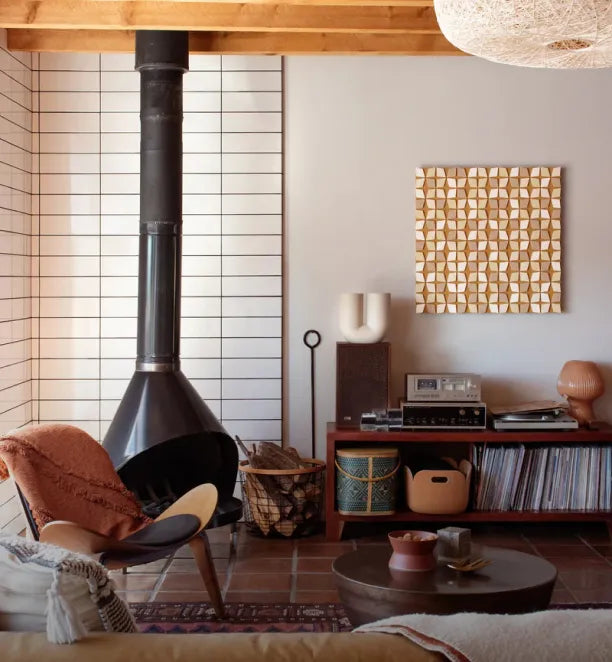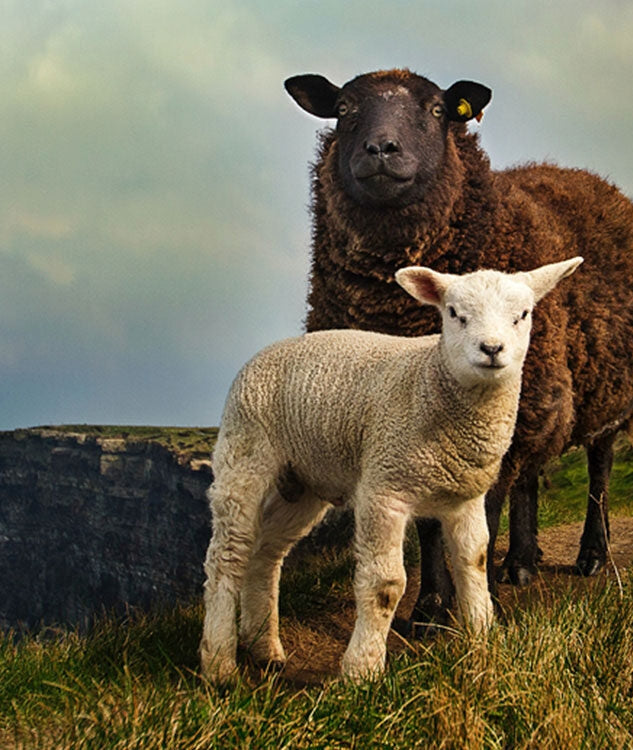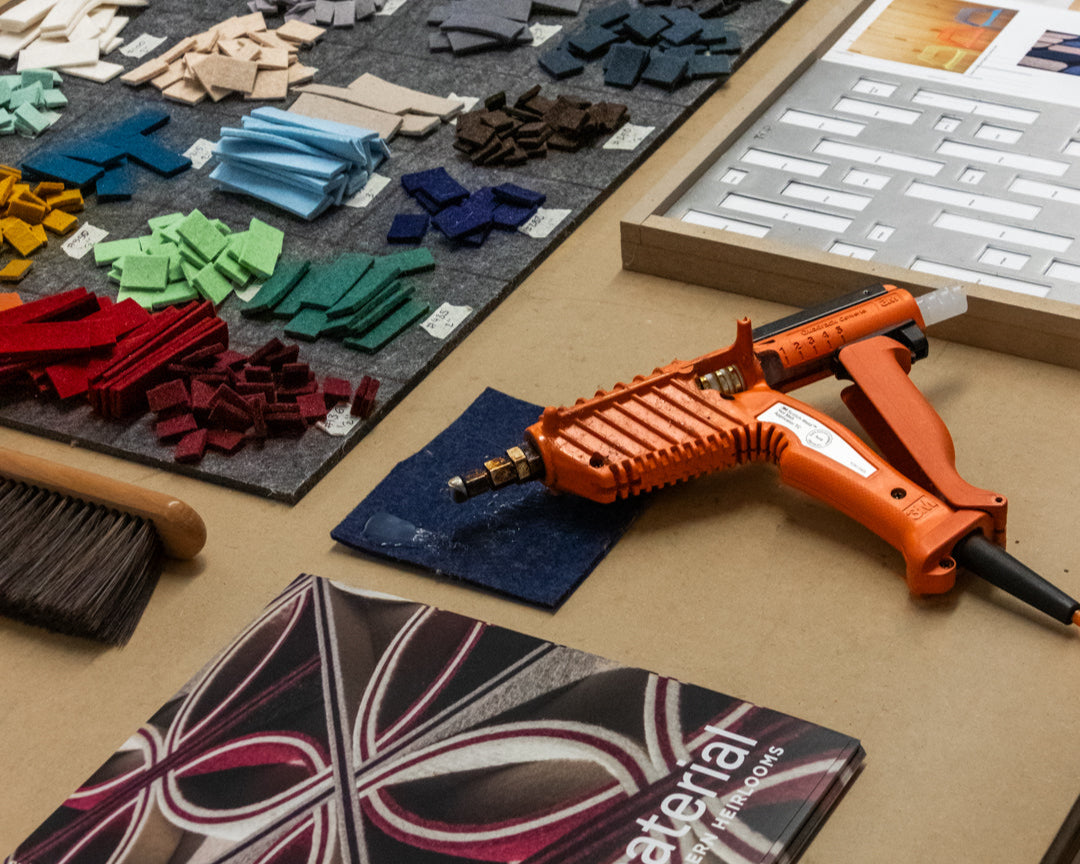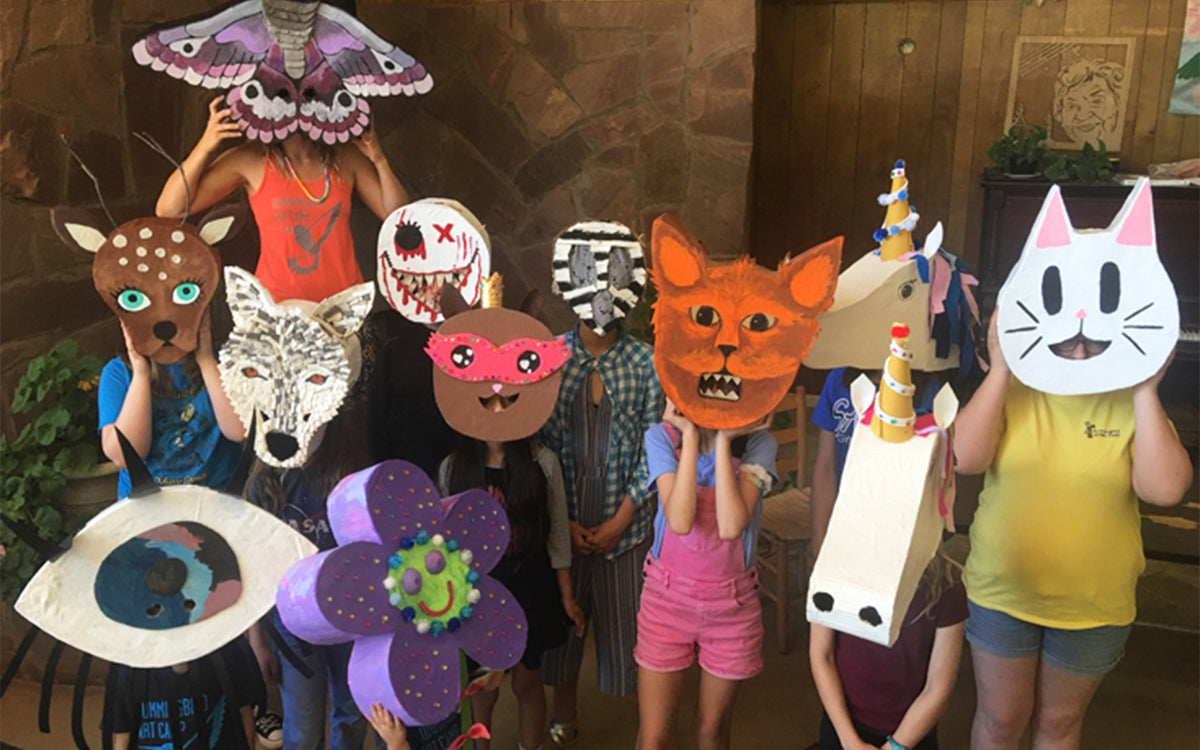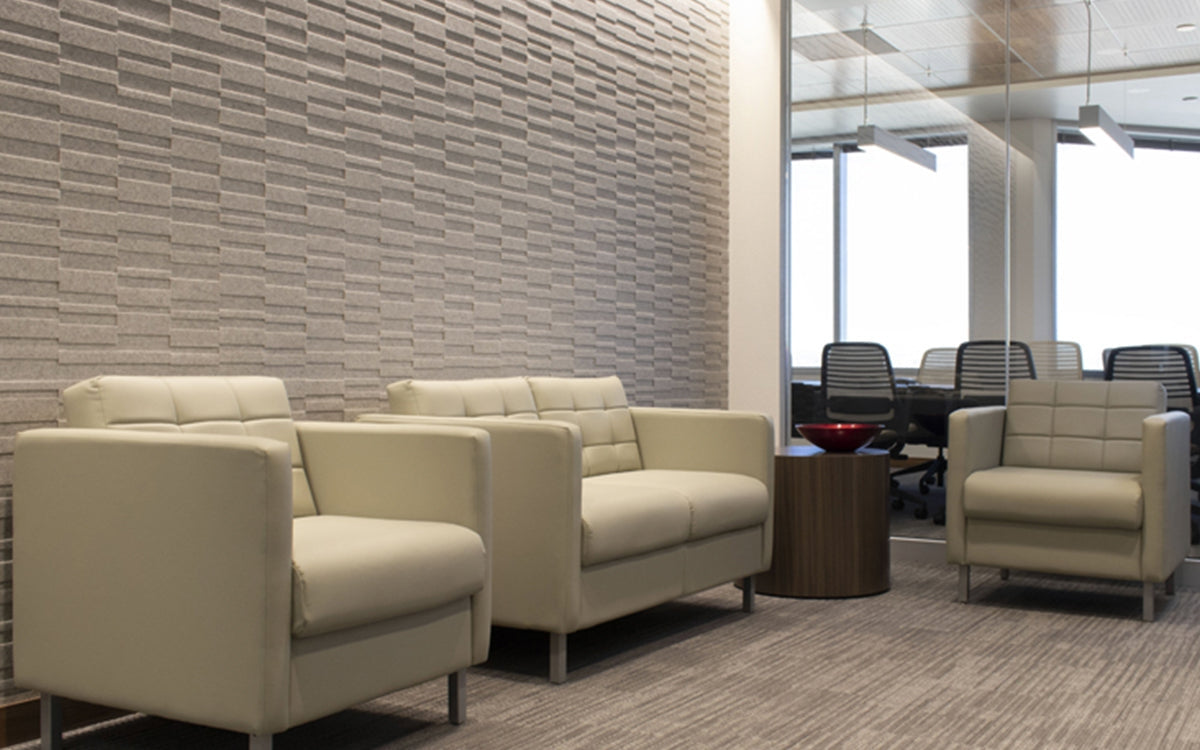Today we’re dipping into the world of felt and can’t wait to tell you about all the wonderful and fascinating tidbits that make felt a super choice – and super sustainable – material!
Submaterial is not a felt company, per se, but we sure do use a lot of it and have gotten very good at understanding its properties. It feels very fitting to use wool felt here in the high desert; ever since the Spanish arrived in the Southwest in the 1500s with new types of livestock, sheep wool has been the primary source of fiber used, creating an incredibly rich history. Coarse spun Churro sheep wool in its undyed earth-tones set the stage for Native weaving (previously using cotton), such as the now historic Two Grey Hills style rugs. Natural dyes from the earth were made from madder root, marigolds, indigo, and cochineal beetles, the latter bringing forth the classic, vibrant red found in Navajo weavings.

Natural fibers of all kinds can be used to be felted, corded, braided, or woven. In ancient times, plant fibers (such as agave or jute), dog hair and even human hair were commonly used. Artifacts from Iraq dating to around 4,000 BC suggest the origins of sheep wool in creating garments, blankets and housing by way of tents. Felting predates weaving and knitting; agitating animal fibers to create a tangled mass that holds together as fabric can be achieved by numerous methods, from pounding to piercing, rolling to rubbing. Incredibly tough and dense, thick well-made felt garments could, in fact, repel arrows – a stellar material for warriors. Its thermal properties are still some of the best insulating choices for winter clothing, and felt is naturally windbreaking, flame resistant and waterproof. In other words: felt’s pretty amazing.

As is the case in any medium that scales from one-of-a-kind to mass manufacturing, exclusively using New Mexican wool would be impossible to sustain a successful business with. To obtain the amount of wool felt needed to fulfill orders, our partner FilzFelt sources wool from New Zealand, Australia and South Africa. Milled in Germany using merino wool, the process of making felt has always been, well, a process.
Felting in modern times begins as follows: wool is sheared from the sheep – it’s a bit like a haircut – then thoroughly cleaned. Willowing comes next, a process that loosens clumps and evenly distributes fibers. It is then ready to be carded, or essentially brushed, into a uniform mass that starts to take shape as a sheet of felt. Then the felting process actually begins. Moisture is added via hot steam to the wool, which helps speed the felting process (and is the reason your wool sweaters can suddenly fit small children if accidently thrown in the wash). While steamed, the felt is compressed repeatedly with hydraulic weight to matte the wool into felt. It is then sent through rollers to condense and thicken the felt, and washed yet again to prepare for dyeing.

Plant based dyes are still used to add color to the felt. A single dye vat can only hold so much felt, resulting in multiple dye lots being common for the same exact color. It’s absolutely wild how different the same two reds can appear – but that’s part and parcel in the world of handmade, even when basic machinery is involved. And while it’s sometimes frustrating to match dye lots for large jobs, there’s a beauty in the inconsistency that reveals a sort of honesty that we adore.
After the felt is dyed, it is then dried, shaved and pressed to achieve a smooth surface. Rolled up into bolts, we receive dozens of bolts in dozens of colors on a monthly basis, ready to be transformed into something new. Felt cuts beautifully, with edges that do not fray due to the aforementioned matting of fibers. It’s soft yet sturdy, and has amazing acoustic properties – perfectly suited to our commercial wall covering, and just as well suited to a handsome coaster on a glass coffee table.
Best of all is its sustainability. LEED and Oeko-Tex® certified, wool is a renewable and safe, natural material – something that we feel 100% comfortable using. Commonly used acrylic or PET felt made from plastic is cheaper, but we choose otherwise. Not only do we prefer a biodegradable material with less environmental impact, but the quality is simply unmatched.
Most importantly, however, we choose to use wool felt to connect to the innate human tradition of craft – using materials that our ancestors used, in a slightly more modern way. It’s what connects us as human beings: working with the natural world and creating with its bounty the ideas that the mind conjures. And Submaterial is a group of human beings who make things with felt: a material that has stood the test of time and still classic after literally thousands of years.

